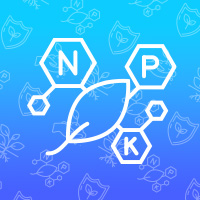Redox Bio-Nutrients names Cora Chandler as first-ever Director of Product Management
Burley, Idaho: In a move that should provide wide-ranging benefits, Redox Bio-Nutrients has named Cora Chandler as the company’s first Director of Product Management. This position will work in conjunction with many departments, and will provide major benefits in coordinating and executing concrete plans for each Redox product.
“We are laser focused on being as efficient as we can, so we can provide the best service to growers,” remarked company President, Colton Moon. “Cora’s work should provide a major boost for us to consistently deliver our bio-nutrient technology to the best effect for our customers and our company.”
Chandler has been in the agricultural industry for 15 years, including the last seven years carrying out product management with a large nutrition company. Her prior work included collaborating with national supplier leads to secure product and alignment on programs, along with analyzing products and portfolios for profitability and agronomic benefits. The Pocatello native starts her Redox job this week.
“I’m very excited to take on a new challenge with Redox, and to continue to increase my knowledge in this amazing industry,” Chandler said.


Missouri Valley, IA – Redox Bio-Nutrients is partnering with two multi-generation heritage farms to launch the XPRT Farm—a 470-acre research farm purpose-built to deliver actionable insights at field scale. Located in Missouri Valley, Iowa, the XPRT Farm is not just another test site—it’s a living laboratory designed to take Redox Research Farm data to a larger scale in real-world, high-efficiency, high-yield farming.
“Our vision for the XPRT Farm is simple: deliver real results that farmers can take straight to their own operations,” said Darin Moon, CEO of Redox Bio-Nutrients. “It’s about proving what works at scale, and doing it on the kind of land that looks just like yours.”
What Makes the XPRT Farm Different?
The XPRT Farm is field-scale—built to be consistent with real farming conditions. This will give agronomists, consultants, and farmers practical strategies they can trust, grounded in rigorous data and real-world complexity. With advanced agronomy, cutting-edge technology, and these strategic partnerships, XPRT aims to provide valuable insight in applied research in agriculture.
The 2025 Focus: Manure Trials That Matter
This season, the XPRT Farm will zero in on one of the industry’s most complex and promising frontiers—manure-treated ground. This year’s trials are all about maximizing the value of manure by unlocking what the Redox Midwest team calls the “manure multiplier effect.”
XPRT Farm will evaluate how to boost yields and crop quality using advanced Redox technologies, including H-85™—a powerful source of humic substances, including fulvic acid—and Redox’s newest product RDX-N™, which features a powerful biostimulant blend that enables up to 50% nitrogen optimization with in-season applications.
To measure the impact of these innovations, XPRT Farm will use a range of soil and plant health testing tools—including the Haney test and Redox’s proprietary Cypher™ Soil Report, which analyzes the total pool of soluble nutrients available to plants. These tools will provide deeper insights into soil biology, nutrient efficiency, and system performance—helping to link product use with both agronomic and environmental outcomes.
Smarter Data, Sharper Insights
To ensure a complete picture of the data analytics, XPRT Farm is utilizing Total Acre’s Yield Management Software (YMS), which integrates grid zone sampling, spray maps, and yield data into a unified platform. This streamlined system reduces friction across the supply chain and delivers trustworthy, transparent, and traceable results.
Join Us
Farmers, agronomists, and industry leaders are invited to explore the findings firsthand at the XPRT Farm Field Day on Wednesday August 20, 2025.
For more details, visit redoxgrows.com/midwest.
The Science Behind Sustainable Agriculture
The move towards more sustainable production agriculture will benefit growers and consumers. Protecting our planet requires collective action, innovation, and a commitment to balance productivity with environmental stewardship. The Food and Agriculture Organization (FAO) in a recent report “Sustainable Nitrogen Management in Agrifood Systems” warns that unsustainable nitrogen use in agriculture threatens human and environmental health, urging improved nitrogen use efficiency (NUE) to mitigate these risks. One area that can help this effort is utilizing microbial biologicals optimally.
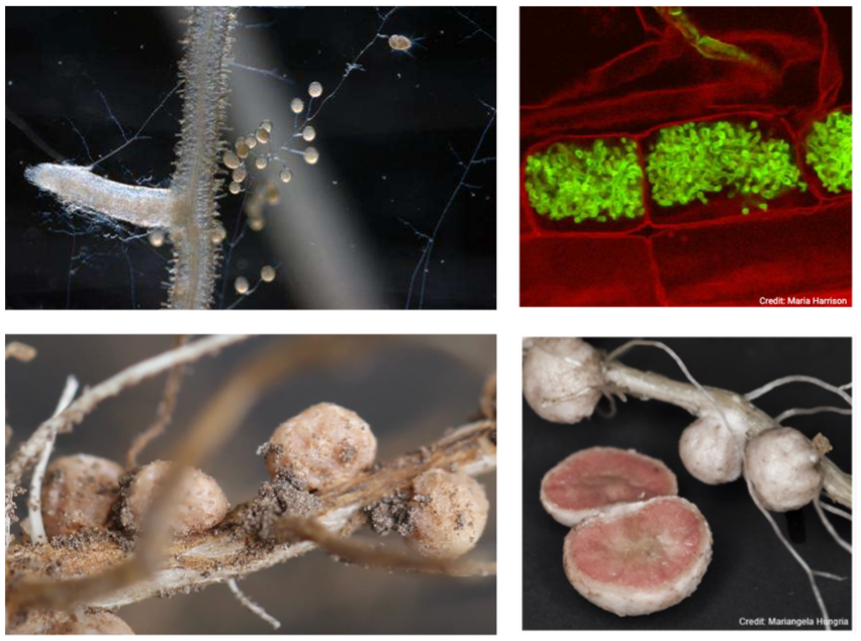
Figure: Two most prominent beneficial plant-microbe interactions in nature are mycorrhizal associations, where fungi enhance plant nutrient and water uptake in exchange for carbon, and rhizobia-legume symbiosis, where Rhizobia bacteria fix atmospheric nitrogen in root nodules. Top Left: Arbuscular mycorrhizal fungi (AMF) spores and hyphae on roots aid in nutrient and water uptake; Top Right: Fluorescence-stained AMF inside root cells show fungal colonization; Bottom Left: Soybean root nodules containing Rhizobia bacteria; Bottom Right: Nodule cross-section reveals pink interiors, typically a sign of active nitrogen fixation.
The Promise and Pitfalls of Microbial Solutions
Microbial biologicals utilizing beneficial microbes such as AMF and rhizobia bacteria have been hailed as sustainable natural alternatives to synthetic fertilizers. However, recent studies have raised doubts about the effectiveness of beneficial microbes and their commercialized versions in delivering substantial nutrition benefits to plants.
A recent study found limited evidence of nitrogen fixation in non-leguminous crops like cereals, reinforcing decades of research suggesting that bacterial inoculants may boost yields through plant-growth hormones rather than N₂ fixation. This questions the broad use of microbes as an independent solution to improve NUE.
Similarly, the soil health industry promotes microbial inoculants for yield, resilience, and carbon sequestration, but a University of Kansas (KU) study found 88% of commercial mycorrhizal products ineffective, often containing dead spores, hidden fertilizers, or pathogens, risking financial loss, environmental harm, and consumer mistrust. Additionally, overusing fertilizers and pesticides to control pests alongside microbial biologicals is counterintuitive, as they undermine the microbial communities these inoculants aim to enhance. This contradiction likely contributes to microbial inoculant failure.
Interestingly, microbial inoculants containing beneficial strains of Herbaspirillum seropedicae and Klebsiella variicola offer notable agricultural benefits; however, certain strains within these species have also been associated with potential human health risks, including reported cases of Herbaspirillum-induced pneumonia and antimicrobial resistance in K. variicola. Environmental stressors can compromise the mutualism between plants and endophytes by the induction of plant physiological responses and may lead to parasitism under extreme conditions.
“Can microbial inoculants independently survive, thrive, and effectively enhance crop growing in oxidized, tilled soils devoid of organic carbon or missing a functional ecosystem to sustain them?”
Building Resilient Microbial Ecosystems: A Path to Sustainable Agriculture
While microbial inoculants hold potential, they alone cannot replace synthetic fertilizers, emphasizing the need for integration with other sustainable practices for optimal nutrient management. As the renowned ecologist Aldo Leopold once said, “The land is one organism. Its parts, like our own parts, compete with each other and co-operate with each other.” This interconnectedness underscores the importance of building microbial ecosystems that work in harmony with the soil, rather than relying on quick fixes that may disrupt this delicate balance. Rather than reapplying microbial inoculants frequently, we should focus on creating environments where these microbes can thrive long-term. We recommend the following steps:
1) Long-Term Monitoring: Tracking microbial dynamics with microbiome and soil health over time enables adaptive application methods, ensuring effective microbial introductions and lasting benefits for soil and crops. Monitoring interactions between inoculated and native soil microbes is key to preventing imbalances or competition. This ensures introduced microbes adapt and provide benefits without harming soil health or biodiversity.
2) Agroecological Practices for Supporting Microbial Ecosystems:
Agroecological practices like reduced tillage, cover cropping, integrated pest management and companion planting enhance microbial ecosystems by improving soil structure, reducing oxidation, and maintaining organic matter for a stable, nutrient-rich habitat. Integrating these practices would gradually rebuild soil biology and restore soil carbon reserves over time enhancing microbial effectiveness.
3) The Role of Soluble Carbon and Charge Balance:
An often-overlooked factor in microbial success is the role of soluble organic matter (SOM). Restoring soil organic carbon through carbon-based biostimulants produced via multi-step fractionation processes enhances soil health by optimizing soil redox potential and charge balance. A multi-step process selectively concentrates and recombines bioactive compounds (secondary metabolites) that are absent in carbon-based products derived from conventional one-step fractionation, enhancing their functional benefits. This will prevent imbalances from carbon oxidation in overworked fields that can disrupt nutrient availability and microbial redox activity. Soluble carbon also serves as a crucial food source for soil microbes, fueling their activity and ensuring their survival. This would strengthen the soil microbiome and reduce the need for microbial reapplications. H-85™ is an excellent example of a superior soluble carbon source.
4) Informed Use of Microbial Biologicals
Buyers must carefully navigate the microbial market to prevent inefficacy and unintended ecological impacts, requiring stricter regulations, validated modes of action, field-tested results, improved quality control, transparent labeling, independent testing, global standards, and locally sourced native microbe products. Establishing industry reliability and consumer trust is essential for unlocking this potential.
The Path Forward: A Holistic Approach to Sustainable Agriculture
To maximize microbial inoculant efficacy, growers should combine regulated microbial solutions with soluble carbon inputs and sustainable farming practices to restore soil and plant charge balance, support microbial health, and minimize environmental stress from excessive fertilizers and pesticides. Educating growers and agronomists on these principles can accelerate the adoption of practices that enhance microbial performance while maintaining ecological balance. As environmentalist John Muir wisely noted, “When we try to pick out anything by itself, we find it hitched to everything else in the Universe.” This interconnectedness underscores the importance of holistic agricultural approaches, reminding us that every decision impacts the broader ecosystem.
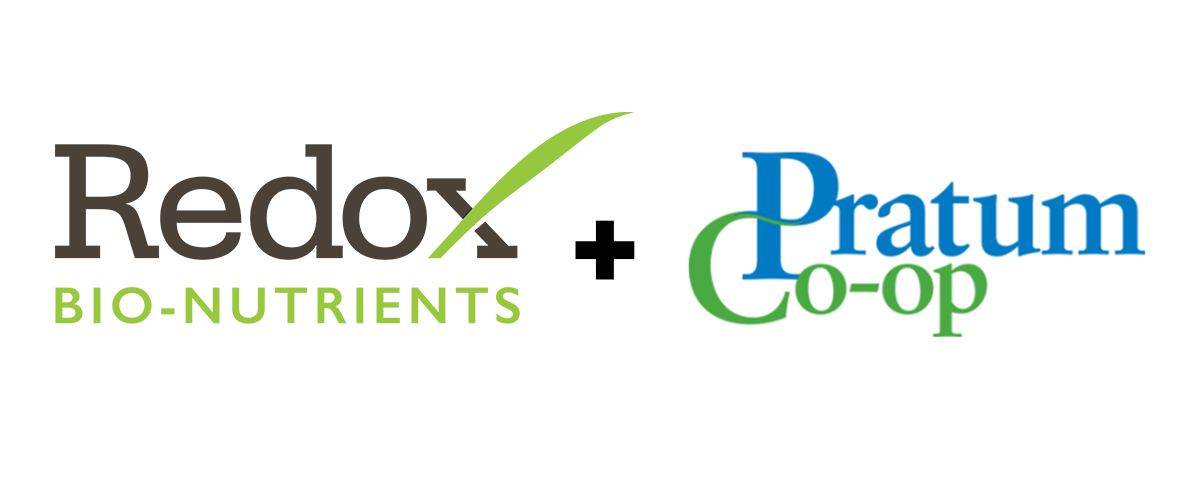
Salem, OR (Feb. 19, 2025) – Pratum Co-op, the leader in innovative ag solutions and one of the Oregon’s premier product and service providers is proud to announce a strategic partnership with Redox Bio-Nutrients. This partnership will combine the superior customer service Pratum Co-op offers with Redox’s cutting-edge foliar bio-nutrition products to grape producers throughout Oregon.
Foliar nutrition involves the application of essential bio-nutrients directly to plant leaves, offering a rapid and efficient way to address deficiencies and boost crop health. Redox Bio-Nutrients’ products are formulated to optimize nutrient uptake, promote plant growth, and increase yields. “We are excited to offer innovative technology and products to our local Oregon producers. The Redox products are a natural fit, especially as we expand our focus to grape producers in the region,” said Angel Torres, Pratum Co-op Specialty Crop Manager. “Being able to offer the viticulture community unique products is one more way Pratum Co-op is leading ag innovation.”
Redox’s advanced technology focuses on sustainable intensification, helping farmers produce more with less environmental impact. Their products are designed to improve soil health, reduce fertilizer runoff, and enhance crop resilience. “We appreciate the opportunity to partner with a company with long history of providing exceptional products and customer service,” said Redox President, Colton Moon. “We have many longtime customers in the Pacific Northwest and look forward to more successful farming collaborations.”
About Pratum Co-op
In 1946, farmers in the community of Pratum, just east of Salem, founded a co-op to handle the prime seed produced in the fertile soil of our Willamette Valley. The co-op became known as Pratum Co-op and became a supplier of fertilizer, crop protection and petroleum products. More than a half century later, each division of Pratum Co-op has expanded dramatically. Since 1946, Pratum Co-op has experienced steady growth and is continually developing new and innovative ways to better serve its customers. Find out more at www.pratumcoop.com.
About Redox Bio-Nutrients, LLC
For the past 30 years, Redox Bio-Nutrients has provided superior plant bio-nutrition by
focusing on the synergy between bio-stimulant and nutrition, helping growers grow abundant, high-quality crops through Redox Homeostasis, or plant charge balance.
Boise, Idaho: Darin Moon, owner, founder, and CEO of Burley-based Redox Bio-Nutrients was among the honorees at last night’s University of Idaho College of Agricultural and Life Sciences (CALS) annual Alumni Awards.
Moon was honored with the University’s Distinguished Associate Alumni Award for his many contributions to agriculture and the university. Since founding Redox Bio-Nutrients more than 30 years ago, Moon has guided Redox to be at the forefront of technological advancements to help farmers in agriculture and turf, across the United States and internationally.
“Darin is committed to sustainability, regenerative agriculture, healthy soil, and plant health” remarked Dr. Michael Parrella, University of Idaho Dean of the College of Agricultural and Life Sciences. “Darin and the research team at Redox team take research very seriously, and the products that they produce are unique and effective. When plants have healthy roots in rich soil, they have a better internal defense mechanism to ward off insects, disease and nematodes, as well as drought.”
A total of nine people were honored during the ceremonies in Boise, including Cole Lickley (Early Career Achievement), Jessica Lancaster (Alumni Achievement), Jack Blattner and Theresa Golis (Distinguished Alumni), Maurice Wiese (Distinguished Retiree), as well as Rick Naerebout, Pat Purdy and Margie Watson (Dean’s Award).
About Redox Bio-Nutrients, LLC
Redox Bio-Nutrients LLC is a family-owned and operated plant bio-nutrition company that has provided unparalleled carbon-based nutrition with bio-stimulants to agriculture and turf throughout the U.S. and internationally for more than 30 years. Redox technology helps crops achieve plant charge balance through soil health, root growth, abiotic stress defense and efficient nutrient uptake.
Burley, Idaho, January 23, 2025: A decade of painstaking research has culminated in the development of RDX-N™, revolutionary nitrogen optimization technology from Redox Bio-Nutrients now available to growers everywhere.
RDX-N™ is a stable, botanical extract biostimulant combined with organic carbon compounds that stimulate better nitrogen metabolism in the plant itself. Optimizing nitrogen use is essential for peak plant performance, including improving crop quality and increased crop yields.
“I’m extremely excited about what this new technology offers,” remarked Redox Owner and CEO, Darin Moon. “It’s unlike anything in the marketplace and will help growers achieve plant charge balance, the single most important thing you can do for year-over-year success in the field.”
RDX-N™ has a patent-pending combination of biostimulants that increase nitrogen optimization, including a 50-percent efficiency gain in synthetic liquid nitrogen applications, while maintaining peak production and quality.
“Information from independent researchers, university affiliates, and from growers has confirmed the research we have conducted in our greenhouse and on the research farm.” said Redox Director of Research, Dr. Gifford Gillette. “Measures of redox potential (i.e., Eh) from multiple crops and locations also confirms that RDX-N™ plays a major role in achieving plant charge balance.”
Redox Bio-Nutrients LLC is a family-owned and operated plant bio-nutrition company that has provided unparalleled carbon-based nutrition with bio-stimulants to agriculture and turf throughout the U.S. and internationally for more than 30 years. Key benefits from Redox nutrition include soil health, root growth, abiotic stress defense and efficient nutrient uptake.
Find out more the entire Redox product line, both conventional and organic, at redoxgrows.com.
Contact: Jim Morris, Redox Bio-Nutrients, jim.morris@redoxgrows.com.
Nutrient, Soil Health and Plant Charge Balance are all Essential
Our mission involves helping growers get the most from their crops. Superior technology from Redox Bio-Nutrients, bolstered by new scientific understandings, make this possible. We can do more with less. It all starts with understanding balance; what it is and why it is critical for success at the farm level.
Nutrient Balance: This refers to the equilibrium of essential nutrients (macronutrients and micronutrients) in soil and their availability to plants. Proper nutrient balance is vital for plant growth and productivity; imbalances can lead to deficiencies, toxicities, and prevention of secondary metabolic activity which negatively impact plant growth, health, and yield.
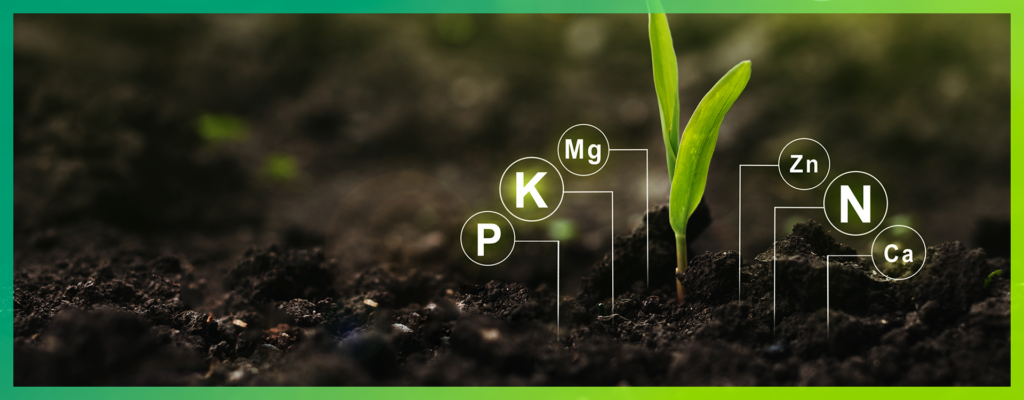
Soil Health Balance: This encompasses the physical, chemical, and biological properties of soil that support its functionality. Healthy soil features structure and chemistry that supports microbial life via organic matter, nutrient availability, and carbon cycling. Balanced soils also promote disease suppression through beneficial microbes that outcompete pathogens.
Plant Charge Balance: This equilibrium encompasses the electrical charge of plant cells, organs, and tissues crucial for maintaining plant signaling and overall plant health. This balance primarily involves cations (positively charged ions, such as potassium, calcium, and magnesium) and anions (negatively charged ions, like nitrate, phosphate, and sulfate). It is essential for nutrient uptake, water regulation, and overall plant vitality. Disruptions can lead to stress and hinder growth, making plants more susceptible to diseases.
Interconnections:These elements are interlinked: healthy soil fosters nutrient availability, which supports plant charge balance. Well-balanced plants contribute organic matter back to the soil, enhancing its health and carbon cycling. A steady soil, nutrient, and plant system leads to a crop that can adapt to its environment when faced with abiotic stress, pests, or diseases ultimately increasing yields.
Understanding and managing these interconnections is key to achieving sustainable agricultural production and ecosystem resilience.

Burley, Idaho: Successful growers continually evolve to stay ahead of the competition.The unparalleled nutrition provided through the Redox Bio-Nutrients Evolution approach is a powerful force to achieve that.
After thirty years of success throughout the United States and internationally, Redox today formally launched in the Midwest, through their Pathway Program for corn, soybeans and wheat. The program consists of three banner products that, when used sequentially, provide efficient, effective nutrition with biostimulants to help achieve plant charge balance.
“We couldn’t be more excited about branching out to America’s Heartland,” stated Redox President, Colton Moon. “We have met with many growers in the region and have seen impressive results with our products through numerous trials. The future is incredibly bright, and we will be side by side with growers to ensure long, productive partnerships moving forward.”
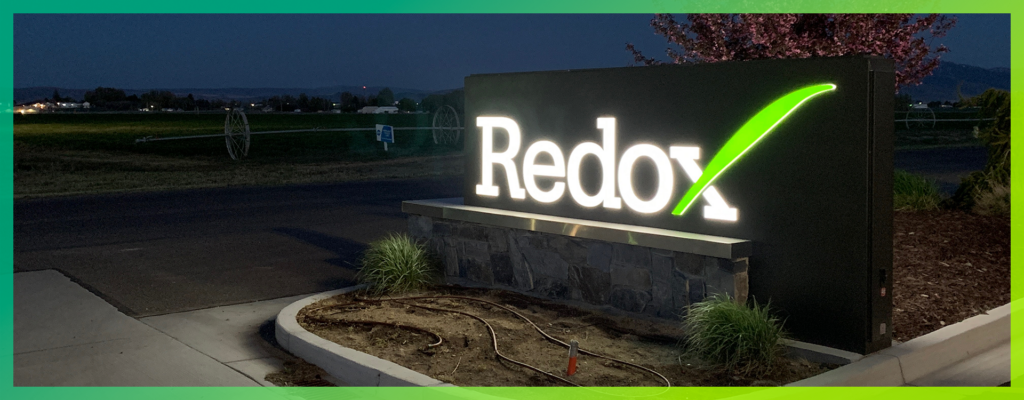
“Our Midwest agronomy team will provide customer service that is a hallmark of Redox,” Moon added. “Our team members Tyler Jones and Aimee Burke are outstanding, and they bring an impressive track record of successful collaborations with growers.”
The Redox Pathway – Midwest Program includes two flagship products and revolutionary new technology with a decade of research behind it. Banx™ is a powerful tool for increasing yield potential. It is specifically formulated with potassium, phosphorus, zinc and boron, as well as biostimulant properties, to aid phenolic compound production and provide stellar abiotic stress defense and nitrogen metabolism. Mainstay Si™ is a microencapsulated silicon and calcium-based product focusing on the synergy of silicon and calcium to improve cell wall structure. RDX-N™ has a patent-pending combination of biostimulants that increase nitrogen optimization, including a 50-percent reduction in synthetic liquid nitrogen applications while maintaining peak production and quality.
Interested parties can find out more at redoxgrows.com/midwest/, including details on our September 25 webinar and signing up to speak with a Redox Bio-Nutrients agronomist.
Media contacts:
Redox Bio-Nutrients, Jim Morris, Director of Communications
208-250-6044 jim.morris@redoxgrows.com
About Redox Bio-Nutrients
Redox Bio-Nutrients exists to create passion and excitement in growing healthier plants. We help growers succeed in four primary areas, soil health, root development, abiotic stress defense and nutrient efficiency. Find out more at redoxgrows.com.
The advancement of irrigation technology has provided huge opportunities for growers to produce safe and abundant food and fiber to our growing US and global population.
However, intensive irrigation can also create soil conditions that can be toxic to plants, as irrigation water and fertigation accumulates salts in the soil during the dry season when there is no rain to leach salts from soils. The accumulation of salts leads to compaction, restricted root development, reduced nutrient availability and reduced water infiltration, leading to stress on crops.
Without rain to purify our soils of salts, growers must find another way to improve soil conditions and relieve crop stress. Without an effective plan, the salt buildup can become more damaging during the growing season and other high stress times of the year.

Amendments including components like soluble/active carbon, calcium and surfactants can all help to improve soil condition and improve plant growing conditions.
The addition of soluble carbon (fulvic acid, humic acid, longer chain carbon and carboxylic acid) components can help to improve soil nutrient availability, sequester salts, stimulate root growth, improve moisture holding capacity, improve CEC and stimulate soil biological activity. The addition of soluble carbon is particularly beneficial in intensively farmed soils as carbon becomes oxidized through tillage and intensive cropping practices.
Calcium is also an important soil conditioning amendment. Calcium in cation form (Ca++) flocculates or “opens” soils. High levels of sodium and/or magnesium tighten clay particle pore space due to the relatively small size of the Mg++ and Na+ cations that bind soil aggregates together. Ca++ is a much larger cation that creates larger spaces between soil/clay particles.

Another beneficial component to incorporate to improve soil condition is the use of surfactants. Surfactants act to reduce water surface tension, allowing water to move more easily through soil pore spaces. When irrigation water is applied to soils, it carries salts which can be beneficial as fertilizer. It also can become toxic for your plant when salt concentrations become too high, or the mix becomes toxic when containing excess levels of salts like sodium, chloride, boron, sulfur and others. Surfactants help to keep the soil solution moving through soil pores and reduce excess concentrations in the root zone.
Ultimately, the best solution will likely contain combinations of the above components. Incorporating surfactants with soluble carbon and/or calcium can provide a synergistic approach to improving soil condition.
Redox Bio-Nutrients is a leader in providing these technologies for growers. Please see some product descriptions below and reach out to us with specific questions on how these products can help improve soil conditions on your ranch.
Redox Bio-Nutrients celebrates Milestone 30th Anniversary in Agriculture
Burley, Idaho: From humble beginnings to becoming an industry leader across the U.S. and internationally, Redox Bio-Nutrients continues to help growers effectively and sustainably grow healthier plants .
“We started in 1994 with $10 in our checking account and an idea,” remarked Redox owner, founder and CEO, Darin Moon. “My wife, Valerie, took the role as supermom with our kids, while corporate agronomist John Kelly and I were on the road building the business. Through perseverance and sound science, we fought through the lean times and made the company what it is today. We couldn’t have done it without the growers and ag retailers who have been such great partners in this journey.”
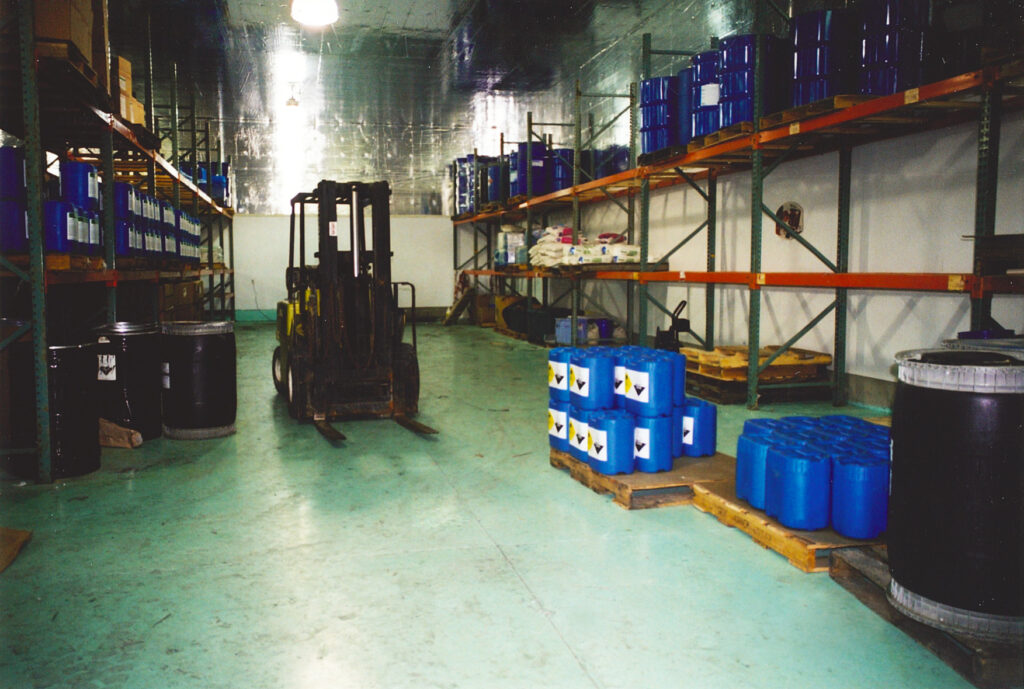
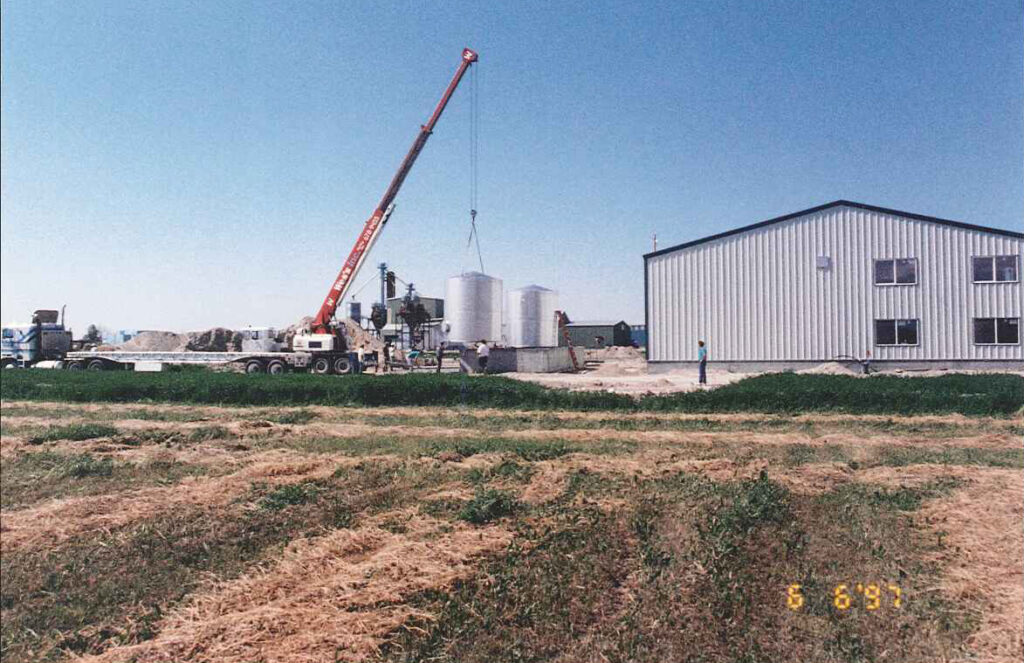
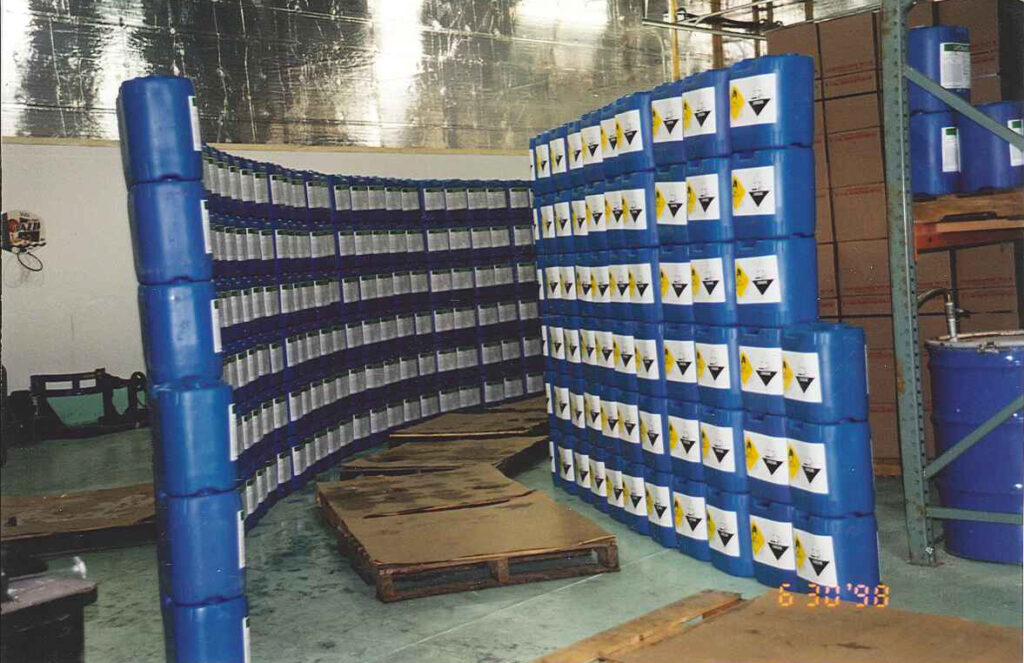
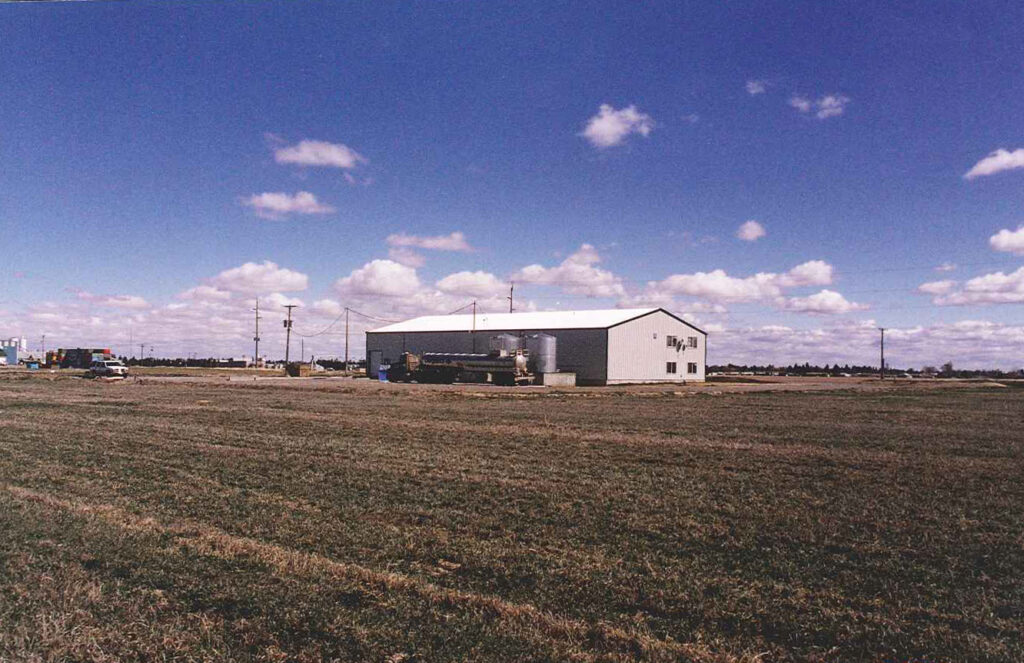
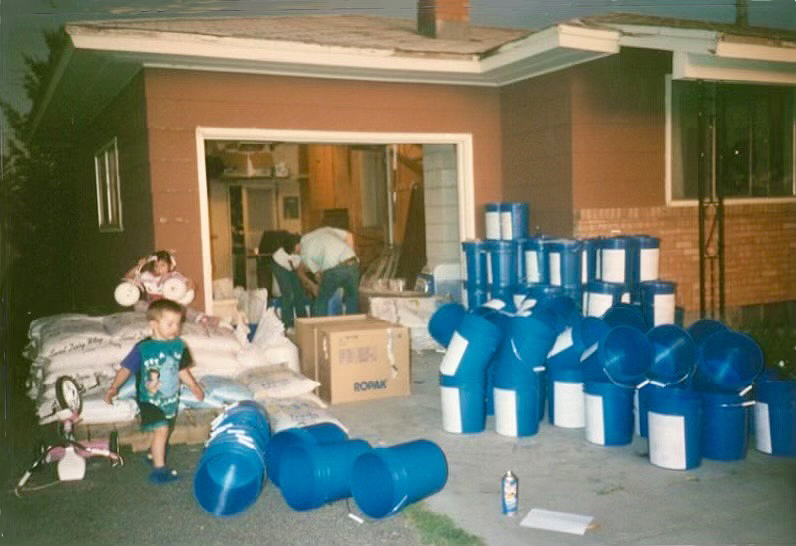
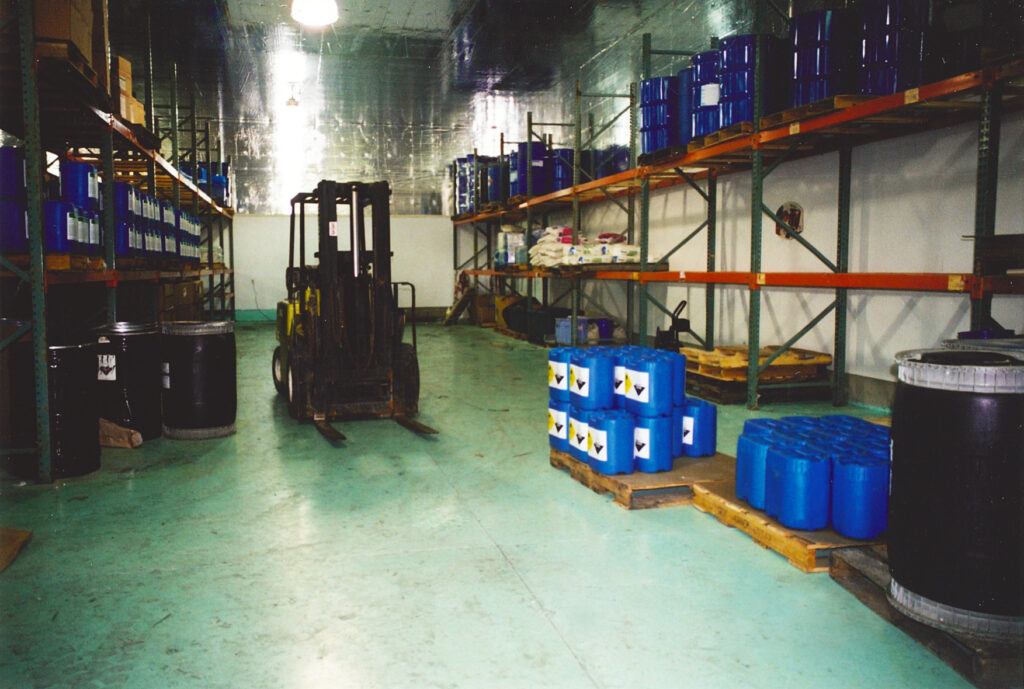
Technology from Redox Bio-Nutrients includes 36 agricultural products, six of which are organic, and 13 golf and sports turf products through the Redox TurfRx line. Redox has obtained six patents and 40 trademarks, with products sold in 48 states and 20 countries.
Moon and Kelly remain extremely active in the company. Darin and Valerie’s family members play pivotal roles at Redox, including sons Colton and Kody. Colton is the company’s president and Kody serves in several roles within company leadership.
Redox was among the first to provide biostimulant technology, in addition to highly efficient, carbon-based plant nutrition. Today the plant biostimulant marketplace is occupied by some 1,200 companies.
“We are constantly challenging ourselves to help growers get the most from their fields and orchards,” said Colton Moon. “Sustainability must go beyond doing more with less to also factor in a grower’s bottom line. Just as our family business includes multiple generations, we are working hard to help ensure future generations of family farmers.”
Redox Bio-Nutrients LLC provides superior plant nutrition with biostimulants to help growers produce abundant, high quality crops through Redox Homeostasis, or plant charge balance. Find out more at redoxgrows.com/30th-anniversary/.

